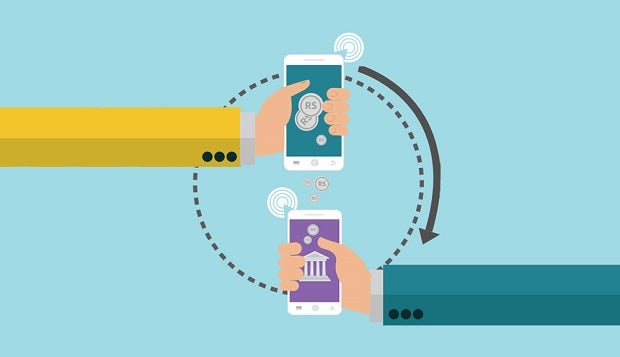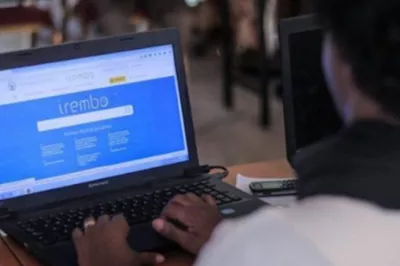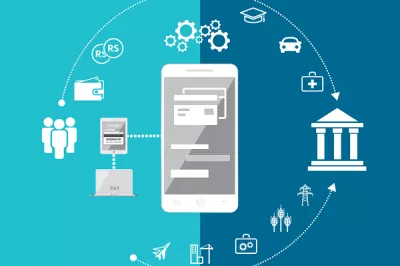Digital P2G Initiatives: 5 Best Practices for Financial Inclusion
Person-to-government (P2G) payments receive considerably less attention from the global financial inclusion community than payments such as person-to-person or government-to-person. This is despite their vast reach and significant value of USD $7.7 trillion globally.
The recently launched “Global Study on Digitizing P2G Payments” by Dalberg, which was jointly commissioned by Karandaaz Pakistan and CGAP, aims to address this gap by examining the state of digital P2G payments globally and providing a roadmap for future P2G payment digitization efforts.

The report does not assume that digitizing P2G payments is a silver bullet for advancing financial inclusion efforts, but that it can make an important contribution toward this goal. For those interested in pursuing digital P2G payments, our findings highlighted five often overlooked best practices to help maximize adoption and use.
1. Choose a wide-reaching P2G use case to begin digitization
When considering where to start when digitizing P2G payments, some use cases are more likely to advance financial inclusion than others. We recommend prioritizing those that: 1) reach a broader share of the population or low-income customers in particular; 2) are used more frequently or regularly; or 3) help address greater “pain points” present in the non-digital process. For example, use cases such as passport fee payments and traffic fines are ad hoc in nature, and automatically limit the targeted population to relatively higher end customers. In addition, with the passport fee payment use case in particular, the payment itself constitutes only a small proportion of the full application process in terms of effort and time. The incentives are low for individuals to open digital accounts for these payments alone, and hence the benefits to financial inclusion and any carry-on effects much more limited. By contrast, fees for schooling or public transport happen at frequent intervals and apply to wider segments of society; they provide a more compelling “on-ramp” to digital accounts, with a consequently higher likelihood of advancing a nation’s financial inclusion agenda.
2. Digitize the end-to-end process, not just the payment
Users of digital P2G payment initiatives again and again told us that digitizing the full business process is the only way they would truly benefit from this shift. For example, digitizing payment for a replacement driver’s license offers little benefit if a user still needs to head to a government office to painstakingly validate their identity and prove the loss of the license; the time savings from digital payment alone is minimal. However, a process that validated a user’s digital identity and allowed him or her to request a replacement online, and also make a digital payment, would offer considerable time and cost savings.
3. Invest in the user experience
A poorly designed user experience can hinder digital payment uptake, and exacerbate consumer skepticism in contexts where consumer trust in the government is already low or few consumers have made the shift from cash to digital. For example, a system that doesn’t provide a receipt to demonstrate payment, or where a digital system can “hang” and require user information to be entered repeatedly, can sow mistrust. Implementers of digital P2G payment systems should consider how to make the experience easy and intuitive for even illiterate customers, and ensure that basic functionality that will build consumer trust (such as allowing consumers access to their historical payment records or receipts) is built into the system design from day one. Lessons from human-centered design are as relevant here as they are for other initiatives to advance financial inclusion.
4. Prioritize education and awareness: digital solutions don’t sell themselves
Choosing a compelling use case for digitization is not enough. Success or failure in consumer adoption can hinge on communicating the value of the measures, and on educating the public about their use. The award-winning Mobile One digital P2G platform in Karnataka, India, offers a telling example. While the platform has been lauded for its design, its customer uptake has been exceedingly limited. In fact, the Dalberg research team could find only nine Mobile One users after contacting a sample of “roughly 550 individuals across rural and urban areas and [spanning] various socioeconomic and demographic criteria.” Beyond the education and awareness investments needed across geographies and user segments, governments can also be creative about exploring other incentives. For example, use of digital payment channels can trigger discounts for government services, or alternatively, governments can consider phasing in mandatory use after an initial learning period, as Rwanda has done in mandating digital bus ticket payments for some urban bus lines in Kigali.
5. Address broader ecosystem issues in parallel
Digital P2G payments do not exist in a vacuum from the wider digital ecosystem. As such, basic issues related to digital payments such as connectivity, interoperability and consumer recourse must be addressed to ensure that the value proposition of digitized payments is not decreased. As an example, consider how frustrating it would be as a consumer to have to open multiple mobile money accounts, each with a different provider, just to access that provider’s digital P2G payment solution because of the interoperability limitations of the wider ecosystem.
In summation, while digital P2G initiatives can advance financial inclusion objectives, those objectives must be kept in mind during the design and rollout phases. To ensure maximum uptake by low-income customers, it is critical to carefully consider what initiative to choose and how it should work from both a business and consumer perspective, plan a suitable communication plan, and ensure that problems in the wider ecosystem are addressed.



Add new comment